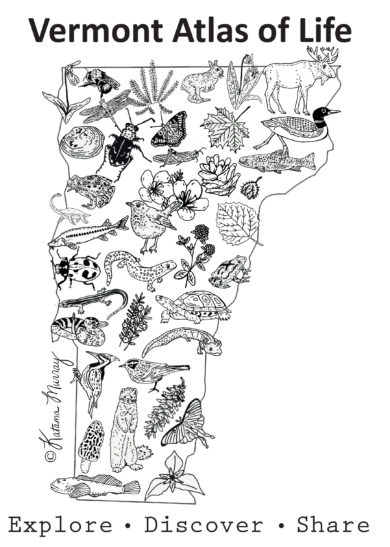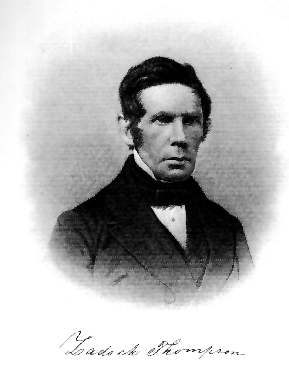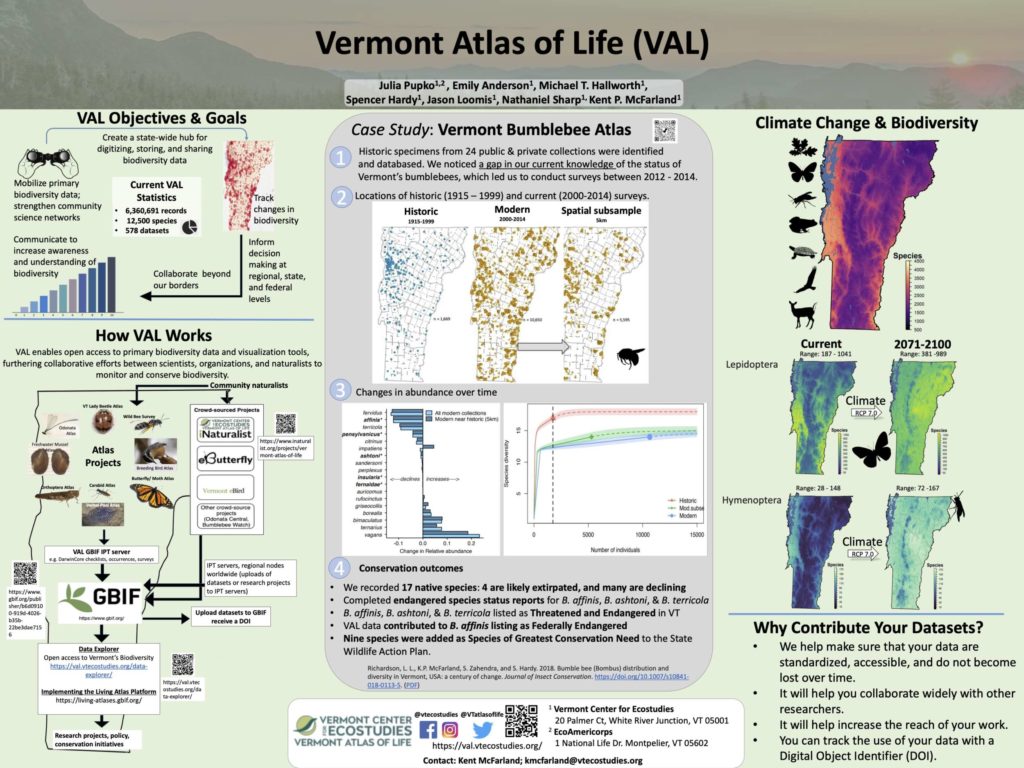The Vermont Atlas of Life is a library of knowledge on Vermont’s animals, plants, fungi and microorganisms – an online, real-time resource with maps, photographs, and primary biodiversity data open for anyone to use.
The diversity of life in Vermont is a beautiful mess. For centuries, humans have documented and celebrated the animals, plants, and other life that together define the nature of this green state. Yet on this journey of discovery we have taken only the first few steps.
 What lives here? Where is it? What’s common? What’s at risk? What will be? The answers lie scattered among books, reports, computers, museums, and even in the memories or journals of Vermonters now living or long passed. The average department store knows more about its inventory than we know about what lives in Vermont. In the information age, this is troubling.
What lives here? Where is it? What’s common? What’s at risk? What will be? The answers lie scattered among books, reports, computers, museums, and even in the memories or journals of Vermonters now living or long passed. The average department store knows more about its inventory than we know about what lives in Vermont. In the information age, this is troubling.
As human activity profoundly alters the map of life on local and global scales, our response requires knowledge of plant and animal distributions across vast landscapes and over long periods of time. Vermonters cannot respond effectively to climate change, natural disasters, invasive species, and other environmental and economic threats without a new understanding of the state’s living resources. At stake is nothing less than the health of our natural world, economy, and human life itself.
The Vermont Center for Ecostudies’ solution is the Vermont Atlas of Life (VAL). VAL is a central library of knowledge on the biodiversity of Vermont: animals, plants, and fungi. At VAL’s core are powerful computers holding every bit of data the atlas project continually accumulates. But VAL is less a computer system than a community of people contributing and using information about the changing nature of Vermont: distribution maps, photographs, and other data free of charge to anyone – from backyard naturalists to scientists to policy makers. In short, VAL is one of the most ambitious and far-reaching biodiversity projects Vermont has ever undertaken.

Naturalist and historian, Zadock Thompson (1796-1856), born in Bridgewater, Vermont, is considered Vermont’s first Naturalist. He was the first writer on Vermont’s history and natural science, including geology, geography, botany, paleontology, zoology, entomology, and mineralogy, and his works have been used as primary sources by subsequent authors.
Vermonters have long upheld a tradition of documenting biodiversity. Biologists and citizen volunteers have recently completed major statewide atlases of birds, butterflies, reptiles, and amphibians. Yet these worthy efforts represent a mere fraction of the state’s natural heritage. We know of 382 bird species and 58 mammal species inhabiting Vermont; our insect diversity alone may approach 22,000 species. Although we have a common knowledge of Vermont’s critical food-crop pollinators, such as bees and other insects, there exists no reliable assessment of their distribution or population trends.
VAL will bridge critical gaps in the loose network of individuals, scientists, organizations, and governments collecting biodiversity knowledge here in Vermont and across the planet. Serving as a model for other states, VAL will link Vermont to worldwide biodiversity assessment projects. VAL’s applications are inexhaustible and the benefits are vast.
From its inception, the Vermont Center for Ecostudies has been a leader in identifying and mapping Vermont’s biodiversity. Enlisting a legion of “citizen-naturalists” to support our efforts, VCE has managed groundbreaking atlas projects on breeding birds, butterflies, bumble bees, and vernal pools. Far more comprehensive, VAL will require leadership, organization, equipment, infrastructure, and staff to curate the ever-growing mass of data. VAL will grow to include millions of records, becoming a legacy for Vermonters working today and those not yet born. The result will enhance life in the state by supporting scientists, taxonomists, natural resource managers, land-use planners, policy makers, elected officials, community-based groups, teachers and students, and anyone with even a passing interest in the nature of Vermont. As VAL becomes a thriving community of knowledge-seekers, VCE will serve as the community’s leadership, librarian, publicist, educator, technical support team, and maintenance department.
Strategic Goals
- Mobilize primary biodiversity data – serve as a statewide hub for digitizing, storing, sharing, displaying, and disseminating biodiversity data through an online portal.
- Tracking change – identify needs and help to produce biodiversity monitoring data.
- Inform decision making – facilitate and promote the use of biodiversity informatics to inform public policy and decision-making through data analysis, interpretation and reporting.
- Collaboration beyond our borders – facilitate sharing of Vermont biodiversity information with regional and international initiative.
- Develop partnerships – collaborate and support partners in biodiversity informatics.
- Communications – increase awareness and understanding about biodiversity.
- Strengthen the community science network – Grow and support the network of volunteers to increase quantity and quality of biodiversity data generated in Vermont via crowd-sourced projects and atlases.







